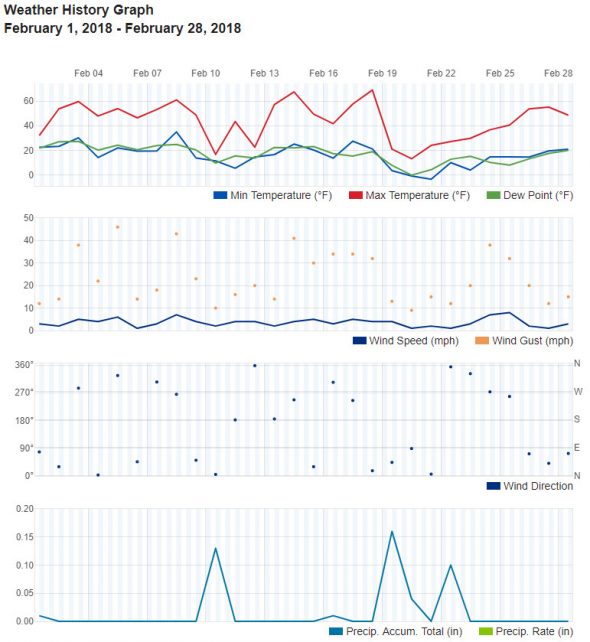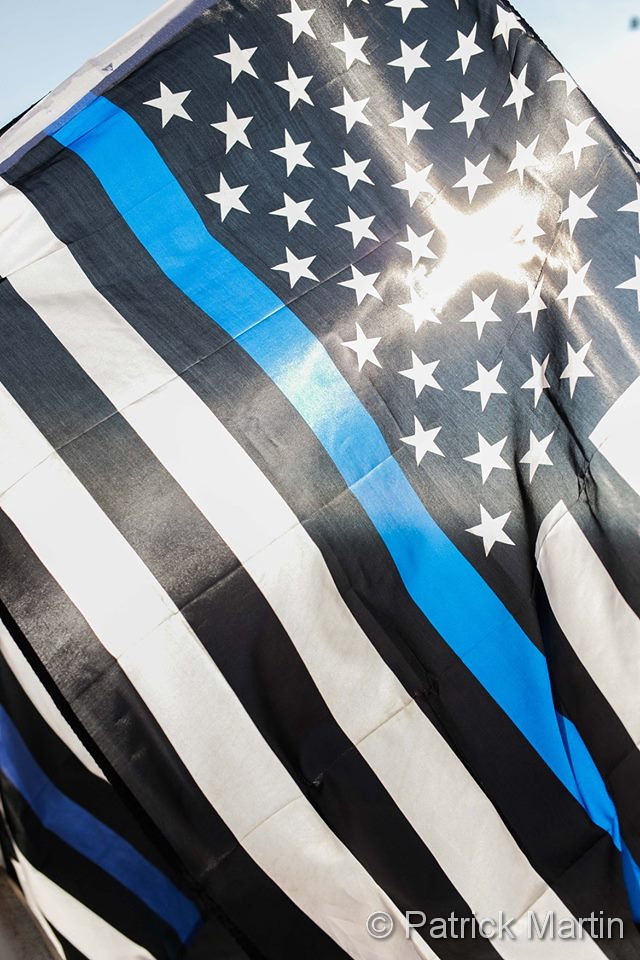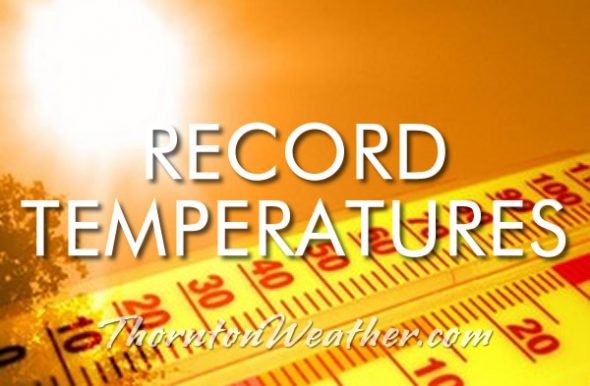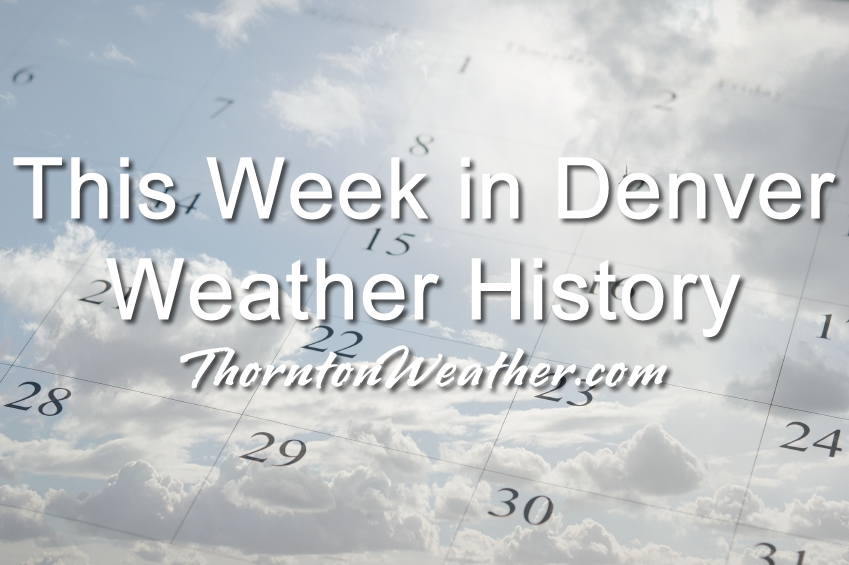
Staying true to its reputation as a relatively dry month, our look back at this week in Denver weather history doesn’t contain much in the way of snow. What it does have an abundance of however are powerful, damaging wind events.
From the National Weather Service:
15-17
In 1938…a cold air mass brought a light snowfall of 6.2 inches over 3 days to downtown Denver where northeast winds were sustained to 18 mph on the 15th.
16-17 in 1929…strong west winds gusting to 84 mph raked Boulder and Lafayette. Limited minor damage and a few injuries occurred.
In 1986…strong Chinook winds continued to howl in the foothills. A wind gust to 89 mph was recorded at Table Mesa in Boulder on the 16th. Winds of 60 to 75 mph were clocked at other locations in Boulder on both days. A west wind gust to 51 mph was recorded at Stapleton International Airport on the 16th.
16-17
In 1929…strong west winds gusting to 84 mph raked Boulder and Lafayette. Limited minor damage and a few injuries occurred.
In 1986…strong chinook winds continued to howl in the foothills. A wind gust to 89 mph was recorded at Table Mesa in Boulder on the 16th. Winds of 60 to 75 mph were clocked at other locations in Boulder on both days. A west wind gust to 51 mph was recorded at Stapleton International Airport on the 16th.
In 2014…high winds developed briefly overnight in and near the foothills of Boulder and Jefferson Counties. Peak wind reports included: 98 mph…4 miles north-northwest of White Ranch Open Space; 85 mph at the NCAR Mesa Lab; 78 mph at the Junction of Colorado Highways 93 and 172; and 75 mph just southeast of Morrison. A semi-truck and an SUV pulling a trailer were rolled over by the wind on Colorado 470 near Morrison. Strong winds damaged a home under construction in Lakewood.
16-18
In 1970…a wind gust to 90 mph was recorded in Boulder at the National Center for Atmospheric Research. In downtown Boulder…sustained winds of 30 to 40 mph with gusts to 53 mph were measured. Damage was minor. West winds gusted to 45 mph at Stapleton International Airport on the 17th. The strong Chinook winds warmed the temperature to 70 degrees on the 16th and to 72 degrees on the 17th…both records for the date. The low temperature dipped to only 32 degrees on the 16th equaling the record high minimum for the date.
17
In 1887…west winds were sustained to 64 mph. Strong winds occurred all day long in the city. Rainfall was 0.02 inch.
In 1894…northwest winds were sustained to 40 mph with gusts to 46 mph.
In 1937…northwest winds sustained to 36 mph with gusts to 44 mph started a few minor fires and broke a number of plate-glass windows in downtown Denver office buildings.
In 1962…heavy snowfall totaled 7.5 inches at Stapleton Airport where the visibility was reduced to as low as 1/4 mile at times. Winds gusted from the northeast at only 15 mph.
In 2009…strong prefrontal wind gusts knocked down some trees and power lines in Boulder. More than 3400 Xcel customers in the University Hill area were without power for about one hour. Peak wind gusts included 68 mph at the NCAR Mesa Lab and 60 mph in Boulder.
17-18
In 1976…a strong cold front produced wind gusts 30 to 60 mph with much blowing snow and severe dust storms. In the Boulder area…high winds collapsed a garage and broke some windows. Northwest winds gusted to 43 mph on the 17th and to 44 mph on the 18th at Stapleton International Airport.
In 1984…the third blizzard in a week struck eastern Colorado. Heavy snow hit some parts of metro Denver with 8 to 10 inches measured in Aurora…but only 2.9 inches of snow fell at Stapleton International Airport where northwest winds gusted to 31 mph.
In 1999…damaging downslope bora winds developed in the foothills behind a strong cold front. Peak wind reports included: 90 mph at the Gamow Tower on the University of Colorado campus in Boulder; 79 mph at the National Center for Atmospheric Research mesa lab near Boulder and at the national wind technology center south of Boulder; and 72 mph atop Blue Mountain and at Jefferson County Airport. Downed power lines caused major outages for at least 10 thousand residents in Evergreen…Idaho Springs…Golden… And Lakewood. In Golden…the wind toppled a lightning static protection line atop a 70-foot…230 thousand-volt distribution tower. The downed line…sparked a small grass fire just east of the Lookout Mountain youth services center. The fire burned a path approximately 100 yards wide and 1/3 mile long before it was contained.
In 2000…snow…heavy in the mountains and foothills…spread over metro Denver. Snowfall totaled 24 inches at the Eldora Ski Resort with 8 inches measured near Blackhawk. Snowfall was only 1.8 inches at the site of the former Stapleton International Airport…which was the only measurable snow of the month.
17-19
In 2006…a cold spell resulted in 4 temperature records. Low temperatures of 10 degrees below zero on the 17th… 13 degrees below zero on the 18th…and 4 degrees below zero on the 19th were record minimums for those dates. The high temperature of only 7 degrees on the 18th was a record low maximum for the date. Light snow fell on the 17th…but totaled less than half an inch at Denver International Airport.
18
In 1918…post-frontal northwest winds were sustained to 40 mph with a measured extreme velocity to 44 mph.
In 1937…a moderate duststorm occurred during the late afternoon and early evening. Northeast winds sustained to 32 mph with gusts to 41 mph reduced the visibility to 1/2 mile which persisted for about 40 minutes in the city.
In 1998…rare thunder from instability rain and snow showers was heard in Littleton during the late afternoon. Thunder in February only occurs about once every 10 years over metro Denver.
18-19
In 1954…a vigorous cold front produced north winds gusting to 56 mph and a trace of snowfall at Stapleton Airport on the 18th. Strong and gusty winds to 55 mph persisted through the next day and caused some blowing dust.
In 1955…a storm dumped heavy snow across metro Denver. At Stapleton Airport where north winds sustained to 28 mph produced some blowing snow…snowfall totaled 8.8 inches.
18-20
In 1913…post-frontal snowfall totaled 6.9 inches in downtown Denver over the 3 days. Most of the snow fell on the 19th. Northeast winds were sustained to 21 mph with a measured extreme velocity to 24 mph on the 18th.
In 1924…light snowfall totaled 4.6 inches over the 3 days. This was the only measurable snowfall of the month. High temperatures plunged from 45 degrees on the 18th to 17 degrees on the 20th. Low temperatures dipped from 31 degrees on the 18th to only 8 degrees on the 20th. Northeast winds were sustained to 24 mph on the 19th.
In 1953…a major blizzard dumped 10.6 inches of snowfall at Stapleton Airport. Strong north winds at sustained speeds of 25 to 35 mph with gusts as high as 44 mph frequently reduced visibilities to 1/4 mile in blowing snow during the day of the 19th. The strong winds caused much drifting snow…making accurate snowfall measurements almost impossible. Precipitation from the storm totaled 1.13 inches. The 1.01 inches of precipitation on the 19th was the greatest calendar day and 24 hour precipitation ever recorded in the city during the month of February.
In 1987…large amounts of new snow fell in the Front Range foothills. The foothills received 10 to 20 inches of new snow with 4 to 8 inches on the adjacent plains. On the 19th…flight delays occurred at Stapleton International Airport where snowfall totaled 4.2 inches and east winds gusted to only 18 mph on the 19th. Schools were closed in the foothills above Boulder.
19
In 1899…northwest winds sustained to 42 mph with gusts to 45 mph warmed the temperature to a high of 56 degrees… The highest reading of the month that year.
In 1980…high winds were reported in Boulder. Sustained speeds of 50 to 60 mph with gusts to 85 mph were measured. West winds gusted to 31 mph at Stapleton International Airport.
In 1986…Chinook winds continued to buffet the eastern foothills. Winds gusting from 60 to 75 mph were common in the foothills. West winds gusted to 41 mph at Stapleton International Airport.
In 1996…high winds gusting from 70 to 75 mph were reported atop Table Mesa near Boulder. West winds gusted to 44 mph at Denver International Airport.
In 2007…this was the last day of 61 consecutive days with snow cover of 1 inch or more in Denver. This second longest period of snow cover on record began with the blizzard on December 20-21…2006…when 20.7 inches of snow fell at the site of the former Stapleton International Airport where official snow measurements were taken. Additional snowfall during December…January…and February prolonged the event. Snow depth on the ground was measured to the nearest inch once daily at 6:00 am MST.
Continue reading February 17 to February 23: This Week in Denver Weather History

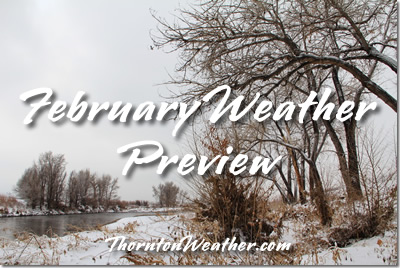 February in Colorado typically brings to an end an extended period when average temperatures are at their lowest. Winter begins to loosen its grip and temperatures get warmer but precipitation is not a particularly common event during the month.
February in Colorado typically brings to an end an extended period when average temperatures are at their lowest. Winter begins to loosen its grip and temperatures get warmer but precipitation is not a particularly common event during the month.